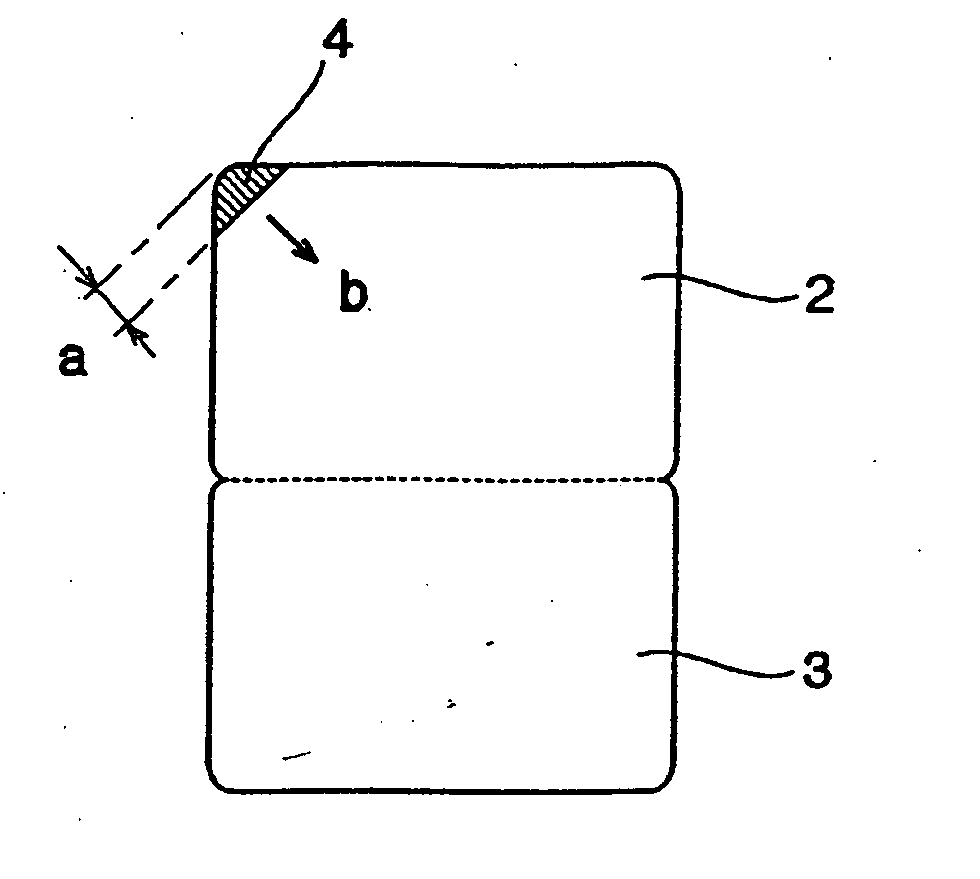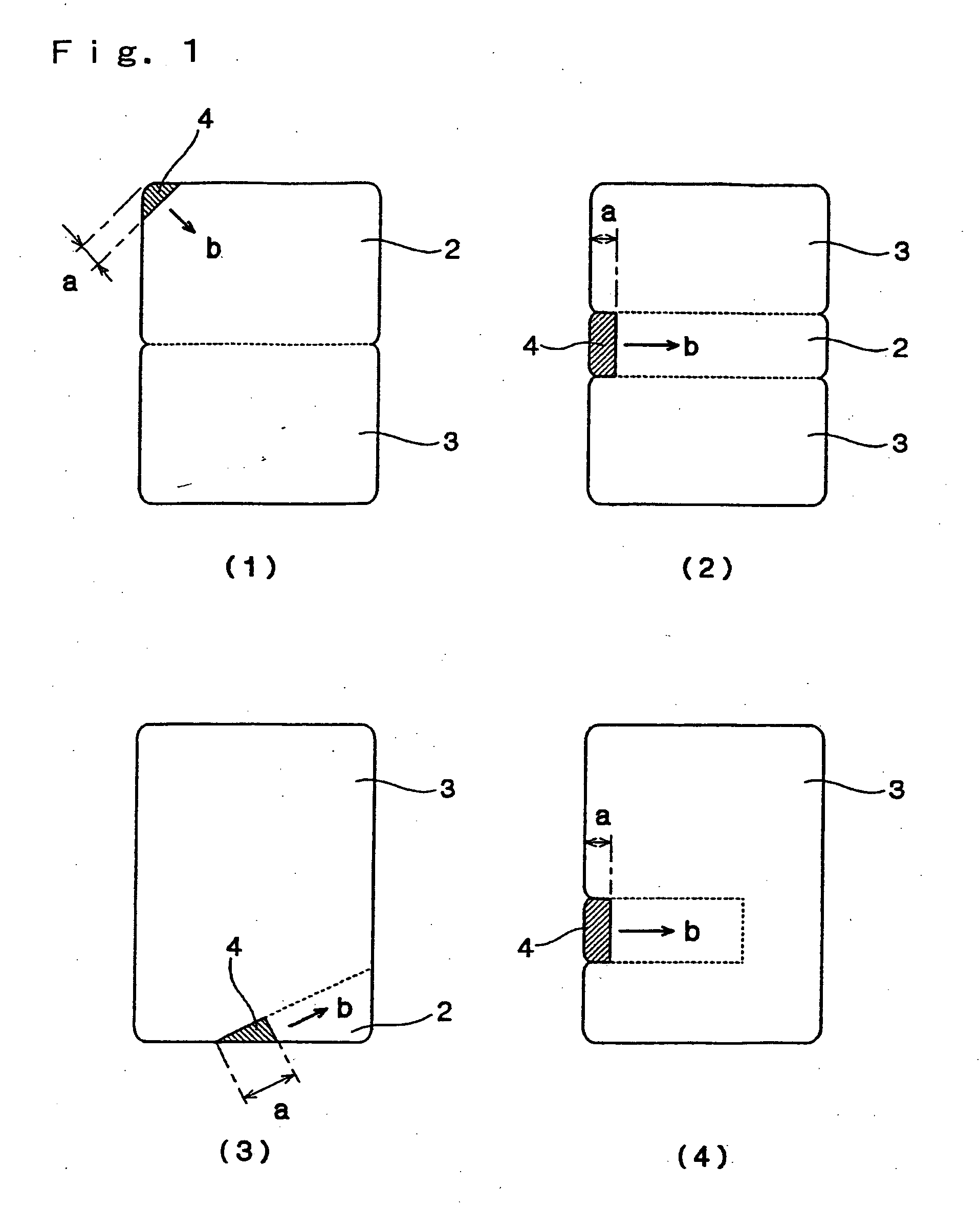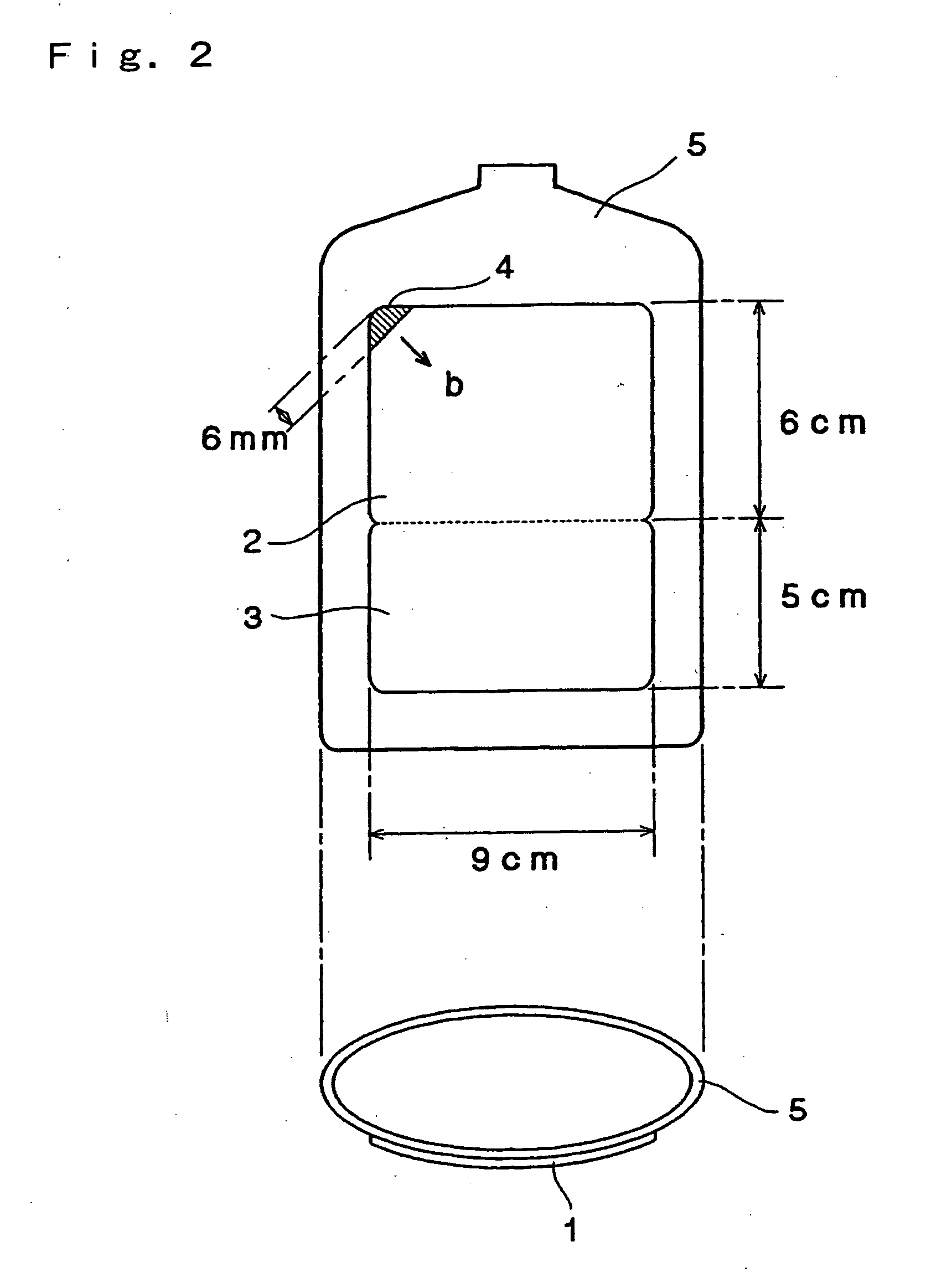In-mold label with separable part
- Summary
- Abstract
- Description
- Claims
- Application Information
AI Technical Summary
Benefits of technology
Problems solved by technology
Method used
Image
Examples
example 1
[0066] A catalyst was prepared according to the method disclosed in JP-A 61-130314. Concretely, to 2.0 mmol of a complex, ethylene-bis(4,5,6,7-tetrahydroindenyl)zirconium dichloride, added was 1,000 molar times, relative to the complex, of methylalumoxane (by Toyo Stofer). This was diluted with toluene to make 10 liters, and a catalyst solution was thus prepared. Using this, polymerization was effected as follows: A mixture of ethylene and 1-hexene was fed into a stirring autoclave-type continuous reactor having a capacity of 1.5 liters, in such a manner that the 1-hexene content of the mixture could be 80% by weight. With the pressure inside the reactor kept at 1,600 kg / cm2, this was reacted at 160° C.
[0067] After the reaction, an ethylene / α-olefin copolymer (having a 1-hexene content of 22% by weight) was obtained, having MFR of 18 g / 10 min, a density of 0.898 g / cm3 and a Q value of 1.9. Its peak in the TREF elution curve of the polymer is one, and the peak temperature is 50° C. ...
example 2
[0080] An in-mold label having a separable part and a labeled resin container were produced in the same manner as in Example 1, except that the lubricant was applied to 60% of the area of the separable part. Of the blown container, the label print did not fade and the label did neither shrink nor blister. In addition, the separable part of the label was not loosened from the container.
example 3
[0081] In the process of Example 1, after the aqueous solution was applied on to the surface layer of the film, an aqueous solution containing 1.0% by weight of the quaternary nitrogen-containing acrylic tercopolymer (a) alone was applied onto the back of the film, whereby the antistatic layer were formed on both surfaces of the film. The wettability index of the surface of the heat-seal resin layer on the back side of the film was 50 mN / m. The others were the same as in Example 1, and an in-mold label having a separable part and a labeled resin container were produced in the same manner as in Example 1. Of the blown container thus produced, the label print did not fade and the label did neither shrink nor blister. In addition, the separable part of the label was not loosened from the container.
PUM
| Property | Measurement | Unit |
|---|---|---|
| Fraction | aaaaa | aaaaa |
| Fraction | aaaaa | aaaaa |
| Fraction | aaaaa | aaaaa |
Abstract
Description
Claims
Application Information
 Login to View More
Login to View More - R&D
- Intellectual Property
- Life Sciences
- Materials
- Tech Scout
- Unparalleled Data Quality
- Higher Quality Content
- 60% Fewer Hallucinations
Browse by: Latest US Patents, China's latest patents, Technical Efficacy Thesaurus, Application Domain, Technology Topic, Popular Technical Reports.
© 2025 PatSnap. All rights reserved.Legal|Privacy policy|Modern Slavery Act Transparency Statement|Sitemap|About US| Contact US: help@patsnap.com



